HOW TO DETERMINE IF A FUNCTION IS CONTINUOUS ON A GRAPH
Question 1 :
State how continuity is destroyed at x = x0 for each of the following graphs.
(i)
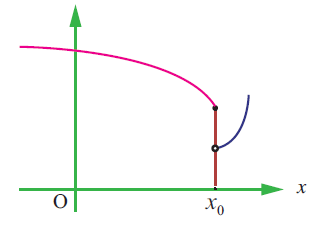
Solution :
By observing the given graph, we come to know that
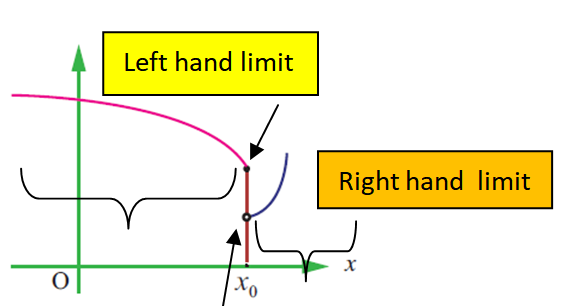
lim x-> x0- f(x) = f(x0) (Because we have filled circle)
But,
lim x-> x0+ f(x) ≠ f(x0) (Because we have unfilled circle)
Hence the given function is not continuous at the point x = x0.
(ii)
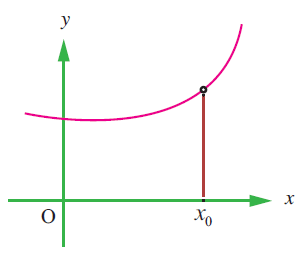
Solution :
By observing the given graph, we come to know that
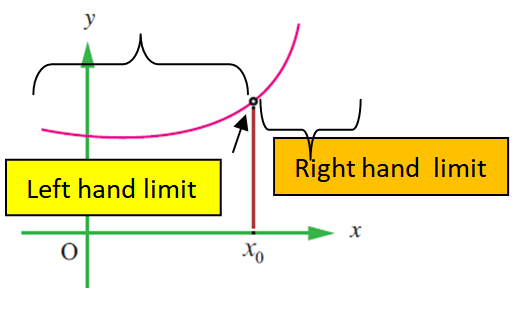
lim x-> x0- f(x) = f(x0) (Because we have unfilled circle)
But,
lim x-> x0+ f(x) = f(x0) (Because we have the same unfilled circle at the same place)
Hence the given function is continuous at the point x = x0.
(iii)
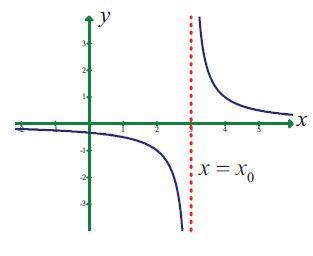
Solution :
From the given picture, we know that lim x-> x0- f(x) = -∞
But,
lim x-> x0- f(x) = -∞
Hence it is not continuous at x = x0.
(iv)
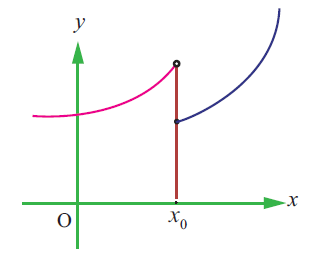
Solution :
lim x-> x0- f(x) = f(x0) (Because we have unfilled circle)
But,
lim x-> x0+ f(x) ≠ f(x0) (Because we have filled circle at different place)
Hence the given function is not continuous at the point x = x0.
Question 2 :
Consider the function f (x) = x sin π/x What value must we give f(0) in order to make the function continuous everywhere?
Solution :
f (x) = x sin π/x
Range of sin x is [-1, 1]
-1 ≤ sin π/x ≤ 1
By multiplying x throught the equation, we get
-x ≤ x (sin π/x) ≤ x
Now let us apply the limit values
lim x -> 0 (-x) ≤ lim x -> 0 x (sin π/x) ≤ lim x -> 0 x
0 ≤ lim x -> 0 x (sin π/x) ≤ 0
By sandwich theorem
lim x -> 0 x (sin π/x) = 0
Now let us redefine the function
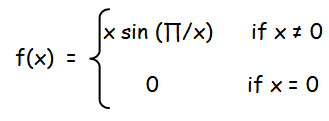
From this we come to know the value of f(0) must be 0, in order to make the function continuous everywhere
Question 3 :
The function f(x) = (x2 - 1) / (x3 - 1) is not defined at x = 1. What value must we give f(1) inorder to make f(x) continuous at x = 1 ?
Solution :
By applying the limit value directly in the function, we get 0/0.
Now let us simplify f(x)
f(x) = (x2 - 1) / (x3 - 1)
= (x + 1) (x - 1)/(x - 1)(x2 + x + 1)
= (x + 1) / (x2 + x + 1)
lim x-> 1 f(x) = lim x-> 1 (x + 1) / (x2 + x + 1)
= (1 + 1)/ (1 + 1 + 1)
= 2/3
By redefining the function, we get
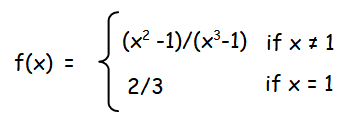
From this we come to know the value of f(1) must be 2/3, in order to make the function continuous everywhere
Kindly mail your feedback to v4formath@gmail.com
We always appreciate your feedback.
©All rights reserved. onlinemath4all.com
Recent Articles
-
AP Calculus AB Problems with Solutions (Part - 19)
Apr 24, 25 11:10 PM
AP Calculus AB Problems with Solutions (Part - 19) -
AP Calculus AB Problems with Solutions (Part - 18)
Apr 24, 25 11:06 PM
AP Calculus AB Problems with Solutions (Part - 18) -
Derivative of Absolute Value of x Using Limit Definition
Apr 23, 25 11:11 AM
Derivative of Absolute Value of x Using Limit Definition
